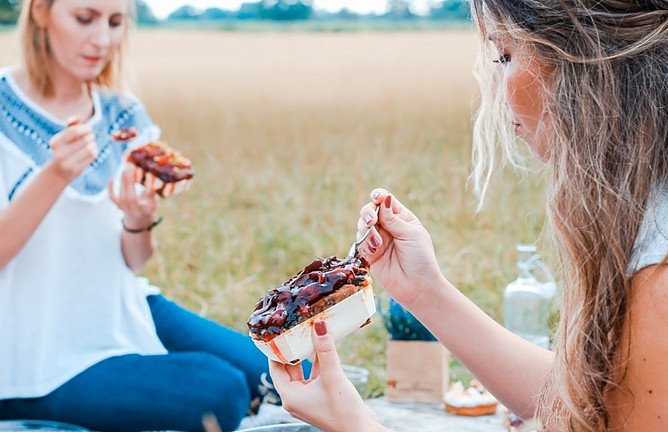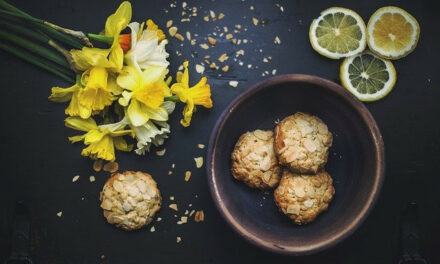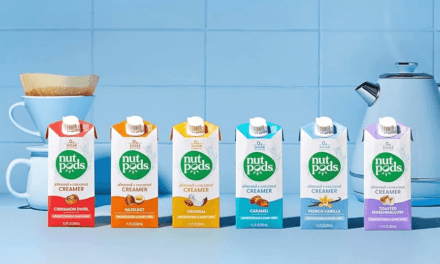Reactive hypoglycemia or postprandial hypoglycemia is one of the two types of hypoglycemia. In reactive hypoglycemia, the blood sugar level drops down in three to four hours after eating.
Some symptoms of hypoglycemia can be as mild as dizziness, sweating, shaking, hunger, and as moderate as faintness, and severe as coma.
If a person suffers from reactive hypoglycemia after the use of insulin and glucose-lowering drugs, it requires the adjustment of the patient’s insulin and medication doses.
Experts are still working to unlatch the primary reasons for reactive hypoglycemia but the observable symptoms direct towards the eating patterns and general routine (and discipline) of the patients.
The quantity and amount of food eaten is considered to be one of the handfuls of reasons that could trigger this condition. Alteration in meal timings can trigger this condition in diabetic patients the most.
Besides food patterns, several other activities can set this condition off too. They include excess and regular consumption of alcohol, some tumors, surgery or bypass etc.
Reactive hypoglycemia can be a reason of inherited and genetic metabolic disorders as well, which is usually found among people with no diabetes.
Hypoglycemia does not have a requisite medical treatment; however, for its symptoms to ease down, there are certain sleeping patterns and eating patterns that dietitians and doctors recommend. Making changes in diet and mealtime variations, people experiencing reactive hypoglycemia s can alleviate mild to moderate symptoms.
Dietitians recommend food that is low in glycemic index and rich in fiber. This keeps glucose levels steady.
Here are some reactive hypoglycemia diet variations and recommendations that can make the symptoms less occurring: 14 Things You Might Not Know about Reactive Hypoglycemia Diet.
1. Go high fiber
Consuming fiber can slow the process of sugar absorption and help to keep it in level.
Moreover, a diet with high fiber, can lower the risk of establishing diabetes type 2 from prediabetes.
Both soluble and insoluble types of fibers are important to the human body. Soluble fiber does not digest easily and helps in maintaining blood sugar levels. Whereas, insoluble fibers keep one’s digestive tract working smoothly without any problem.
8 to10 gm of high fiber content is recommended per day.
Whole grains, fruits and vegetable are highly recommended.
Tip: Be aware of these diabetes food myths.
2. Starchy food low in glycemic acid
Starchy food that is low in glycemic acid is supposed to be taken in a certain quantity per day to maintain a balanced diet.
Oatmeal, bread made from stone-ground flour and mixed grains, lentils and beans, barley, bulgur and oat bran are some food items that are low in glycemic acid and can help with maintaining an acceptable amount of blood glucose.
Tip: You must avoid oatmeal if you have gastroparesis. In that case, stick with the Diabetic Gastroparesis Food List.
3. Avoid mixing alcohol with other drinks
If you consume alcohol and are more likely to experience symptoms of hypoglycemia, your drink should not be mixed with any other sugary drinks at all costs. Instead, having it with food is better than consuming alcohol alone.
Tip: We covered more tips about the effects of alcohol on hypoglycemia in the article ‘Things You Didn’t Know About Hypoglycemia’.
4. Protein source
Meaty and non-meaty sources of protein are both encouraged.
Protein, when enters the body, is broken up into amino acids and are absorbed in our bloodstream.
Due to insulin, the muscle cells take up these acids, and the liver releases sugar due to glucagon. As a result of this release of sugar by the muscles, the blood sugar levels remain almost stable.
5. More than three meals
Instead of taking just three meals throughout the day, dietitians recommend people with hypoglycemia to consume small portions of meal throughout the day.
These portions can go as much as 5 to 6 meals in a day.
The time between two meals can vary from three to four hours. It is recommended that these small portions be rich in proteins and healthy diet.
6. The dangers of processed sugars
For people with diabetes, processed sugar is considered to be one of the not recommended food items.
In this era, almost everything is made up of processed sugar, and it is a threat to diabetic patients as well as to those who show the symptoms of reactive hypoglycemia but do not have diabetes. However, reactive hypoglycemia is one of the early signs of diabetes.
Tip: Symptoms of diabetes can be different between men, women and children.
7. Healthy snacks
As mentioned earlier people with diabetes are recommended to eat 5 to 6 meals per day, this is accurate with the food being in terms of small and little snacks.
A few tips and ideas for preparing and consuming healthy snacks are below.
- Fruits like banana and apples with a handful of seeds or nuts
- Cheddar cheese and apple slices
- Smoothie made from fruits and vegetables
- Wholegrain slice toast with hummus or mashed potatoes
- Greek-style yogurt sprinkled with nuts and grains etc.
8. A snack by your side
Blood glucose of the people with diabetes who rely on insulin can take a dip at any hour a night.
So, to avoid any ‘hypo’ emergencies, doctors and experts recommend to always keep some healthy snacks by their side before going to bed.
Snacks rich in quick-acting carbohydrates can be very helpful when low sugar levels hit during the night. A piece of bread is one of the most common items that are easily available anywhere and also is rich in fiber and carbohydrates.
Tip: Here is the most popular Type 2 Diabetes Food List. It comes with some smoothies too.
9. Eat your sweets too
If you have a craving for sweets with a sweet tooth, you could consider a piece of chocolate from your freezer or leftover brownie. You need to be cautious about what you consume through and keep track of your food intake.
The idea is you may have something sweet once in a while. The drill is to have it with your food and not at a different hour as a standalone ‘meal’.
10. Spread the intake
To regulate your food balance in the diet and to control the symptoms, you may want to spread your food into small portions and consume them accordingly.
Large portions of rice, bread and pasta can result in the production of excess insulin and eventually, a decrease in glucose levels.
Tip: You have to extremely mindful about your meals when you travel and enter a hot climate.
11. Carb intake
Aim for 30 to 60 gm of carbs per meals and 15 to 30 gm while consuming snacks at different times of the day. This way, you can treat your cravings while maintaining a suitable balance.
12. Write down your diet plan
If daily plans and new ideas for healthy food is disturbing you, you should list down the food items that are per your taste bud preference and write them down under the heading of ‘healthy food’.
Make a meal plan which includes separate items for breakfast, lunch, dinner and snacks throughout the day. Writing a list down will not demotivate you and, thus, keep you ahead with daily meal plans.
13. Keeping a track
Keep track of whatever food items you consume and the possible reactions and symptoms those food items resulted. This will help you in explaining your doctor and dietitian about your condition. That will also be considerable guidance to your doctors in making decisions on how and what to alter from your meal plan and medications.
Tip: Make sure you go through the checklist of qualities of a good diabetes doctor. If your doctor does not tick all the boxes, don’t be hesitate to find for a doctor with a more specialized interest in managing diabetes regardless you have diabetes mellitus or diabetes insipidus.
14. Know what not to consume
Knowing which food to eat is important but knowing the kind of food you should not be consuming often is even more critical.
Do your homework and know which food items a threat to your condition can be and based on what possible factors, should you not consume them.
What triggers your symptoms? Which snack you had on the day encourage or suppress your hypo symptoms? Which food items you are concerned about and consider not necessary for you to eat? etc.
Answers to those questions will help you to customize your reactive hypoglycemia meal plan as per your individual body needs.
Having a basic knowledge of these queries will help you more than everything since you will be keen as to why a particular food should not be consumed. Some of that food that you should closely monitor the effects they result include caffeinated drinks, sugary food items and alcohol.
Tip: Always stick with one of the best glucose monitors such as Dario glucose meter, so you will have precise blood sugar measurements. Not to forget that blood A1C measurement provides a better picture of your health than regular blood sugar level monitoring.
Tip: Essential oils come handy for people with diabetes.







